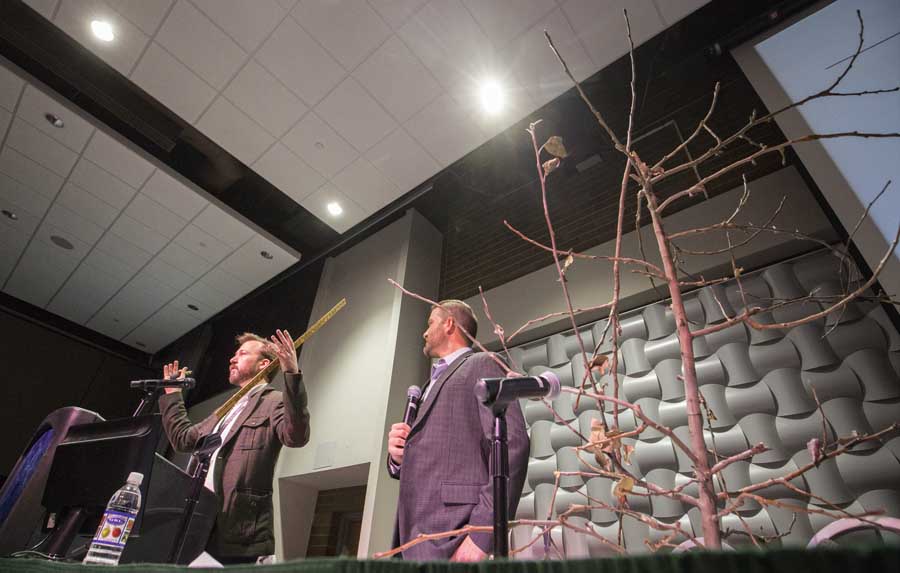
Mark De Kleine talks about strengthening trellises on prevailing wind rows during the 112th Annual Meeting and Northwest Hort Expo on December 6, 2016, in Wenatchee, Washington. (TJ Mullinax/Good Fruit Grower)
Technology and mechanization led the topics for the second day at the Washington State Tree Fruit Association’s annual meeting.
In a morning session, researchers provided updates on their trials with new dwarfing cherry rootstocks, apple rootstocks and development of pear rootstocks, a program for which is just getting underway. Trellis engineering and a robotic harvester also were hot topics.
Mark De Kleine of De Klein Machines and Paul Booker of Steep Consulting shared results of a survey of trellis failures in the tree fruit industry.
The study, funded by the Washington Tree Fruit Research Commission, aims to provide growers some concrete standards for trellis construction to help avoid failures in the future.
Their grower survey showed that half of all trellis failures were in a vertical trellis, with the other half in angled trellises.
Most were fairly new systems; more than 90 percent had been established for fewer than 10 years, which means the problems don’t appear to be related to fatigue.
In addition, the majority of failures occurred when post spacing was greater than 40 feet.
They offered a preliminary list of dos and don’ts: Observe your trellis, fix your post depth to one-third the height of the trellis, use good material that is sized correctly, keep your fruit in the trellis region and look for deformations in your materials. Some don’ts: Don’t let posts lean, overstress them, or allow fruit to grow outside the fruit zone.
Watch their session wrap interview with Good Fruit Grower.
Dan Steere of Abundant Robotics also provided an update on the development of a robotic harvester for apples. Abundant is aiming to have an automated harvester available commercially by fall 2018.
So far, the system’s vision system is capable of “seeing” 95 percent of the apples in a fruiting wall-type canopy. Fruit defects have been low.
The other morning session focused on consumer expectations—and it turns out, growers’ expectations of fruit quality line up closer with those of consumers than packers.
That’s one of the most eye-brow raising results of a research project by Karina Gallardo, a Washington State University economist trying to determine how the industry’s assumptions of fruit quality line up with those of the people buying fruit.
“Producers are getting to understand consumers and that’s great,” said Gallardo, an extension educator Puyallup.
Gallardo was one of several speakers discussing how to understand and meet consumer expectations for apples, pears and cherries in one of the morning sessions Tuesday at the Washington State Tree Fruit Association annual meeting in Wenatchee.
Also in the expectations session, George Szczepanski, business development manager for the Produce Marketing Association, told growers that fresh fruits fits nicely with a consumer trend toward snacking.
Once considered a vice, contemporary consumers consider snacking a critical part of their day and many want to do it in a healthy way.
He also said millennial consumers highly value local food and the stories that go along with it.
Several topics were discussed during the Spanish sessions, including how food safety is a personal commitment by employees working with fruit, whether it be in the orchard or the packing house.
Jacqui Gordon, director of education at Washington State Tree Fruit Association, spoke about how easy food-borne illnesses can be avoided when workers take simple precautions to minimize risks.
Gordon provides a few tips in this session summary:






Leave A Comment